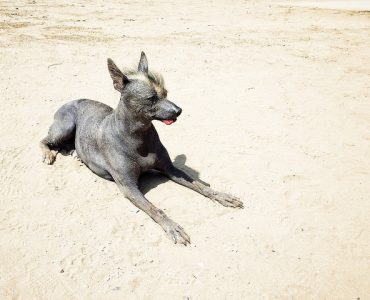This is a rare and ancient breed that carries a dominant mutant gene for hairlessness. It is found in South and Central America and the Caribbean as well as Mexico. Its numbers were decimated by native people who killed it for its so-called healing properties, so it is now a fiercely protected species. Its native name is Xoloitzcuintli, which has been shortened to Xolo.
Hairless dogs have bred naturally for over 3,500 years as proven by ancient native artefacts. It is thought the gene for hairlessness was a spontaneous mutant that gave the dog more chance of survival in the wild and so became dominant. The dog was worshipped by ancient cultures, including the Aztec and Coltec civilisations. Some tribes believed the meat to have healing properties, and illegal dog meat is still found for sale in some remote districts.
The Xolo only received official breed recognition in the 1950s after they began turning up at Mexican dog shows. Initially, they were regarded as a novelty, but, in 1954, a breeding programme was established due to increasing concern over their rarity. The breed was registered in 1956.

The Mexican Hairless Dog is a naturally created and pure breed. It is a medium-size dog of average build but varying in height. The back is slightly longer than the legs. Although the hairless gene is dominant, recessive coated dogs do surface occasionally. The dog is further divided into toy, miniature, and standard dogs. Although docile and friendly, the dog has primitive traits and is hard to train.













